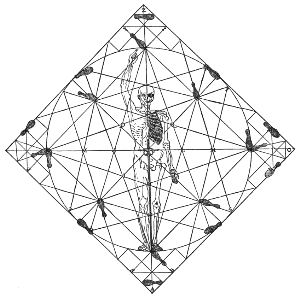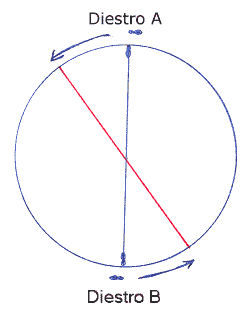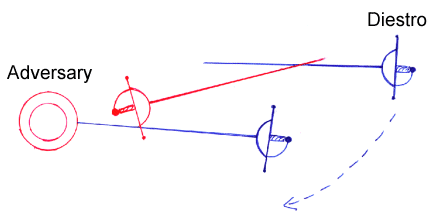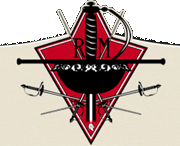The Spanish School of Swordsmanship, “La Destreza,” is the most misunderstood subject in the history of fencing. It has been misrepresented by fencing scholars for the past one hundred years as an ineffectual and artificial system of swordsmanship full of absurdities. The intent of this article and others to follow is to present a clearer and more accurate picture of what “La Destreza” is.
Articles


One of the most important aspects of La Destreza is the concept of "angular attack and defence." As was presented in the first article, the two swordsmen assume their stance (Afirmarse) at opposite ends of the diameter of an imaginary circle, each with their sword arm extended and the point of the weapon continually threatening their adversary. The problem that each diestro now faces is how to penetrate that line of defense without being wounded himself. Any attack or defense executed straight at the adversary would, for all intents and purposes, be suicidal. This problem is solved by the use of "angular attack and defense."

Three Destreza Attacks against the Common Vulgate Fencer interpreted from the writings of Narvaez “Llave y gobierno de la destreza. De una filosofia de las armas.”(1608) The following three attacks (offensive maneuvers) from La Destreza were taken from the above mentioned treatise. I have broken down the demonstrations of Narvaez into their most common denominator by simplifying the translated Castilian into fencing terminology that is in common usage today. I would have preferred to translate the original text as it appears but since the aim of this series is to demystify I thought it prudent to use language as well as terms that any well trained fencer having a firm technical foundation can comprehend. The word "vulgate" in the title of this article is the term used by Carranza and Narvaez when they referred to the more common form of swordsmanship practiced during their era. The following are the demonstrations:
This paper was delivered on April 9th, 2005 at Cambridge, UK for the Renaissance Society of America's Annual Meeting. Synopsis: Although later misunderstood as a ponderous and impractical edifice, the system of fencing developed by the sixteenth-century Spanish nobleman Jeronimo de Carranza was, in fact, a very practical method of personal combat—albeit one he explained using the language of Scholastic intellectual orthodoxy.
Sparring, one of the terms in common usage today, is very annoying because it creates a distorted modern view of how training should be perceived and conducted. The use of the word "spar" completely obscures any attempt to understand the frame of reference of the swordsmen, fencers, warriors or combatants of the past which is key in gaining knowledge of how weapons and practice weapons were used. To further elaborate on the inappropriate use of the word "spar" and/or "sparring," I summit the following:
